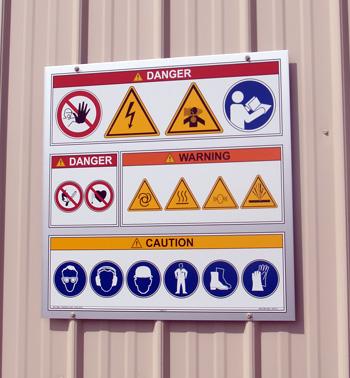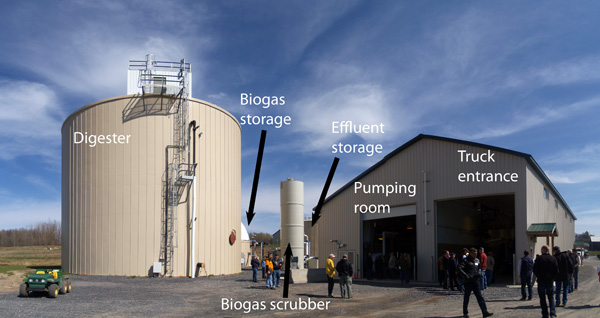An environmental policy statement (EPS) is a proactive way to communicate about your farm, ranch or agribusiness environmental stewardship ethic. At first glance, this might seem like a “feel good” exercise with little practical value. However, experience has shown that farmers and ranchers are quick to identify ways they can use the policy statement for their operation. The exercise stimulates conversations that many farm operators have not previously initiated with family or employees.
What Is an Environmental Policy Statement (EPS)?
Example Policy Statement
Jones Family Farms is a diversified operation with poultry, cattle and alfalfa hay production. The farm employs its husband and wife owners on a full-time basis and two employees on a part-time basis. Jones Family Farm is located near a small housing development along a busy highway; therefore our relationship with our neighbors and community is an important aspect of our operations. We will strive to maintain a neat and professional appearance on our farmstead. Poultry litter applications will be made to our hay ground with consideration to potential impacts on neighbors.We are committed to compliance with all pertinent environmental laws and regulations; we are committed to continually improving conservation practices and environmental management that will benefit our farm’s value for future generations. Our profitability depends upon maintaining efficient long-term productivity. We also seek to: 1) To manage riparian areas in such a way that provides wildlife habitat and protects water quality and 2) To improve soil quality by minimizing erosion and building organic matter through calculated use of our poultry litter resources. |
An EPS consists of several specific statements. These reflect a general description of the operation and its most important environmental issues. The EPS also communicates commitments to regulatory compliance, continual improvement and stewardship. While these statements appear to be prescribed, there is a great deal of room for an operation to personalize and create an EPS that reflects their individual values and goals.
An environmental policy statement (EPS) is one piece of an environmental management system (EMS). An EMS is a systematic approach to environmental decision making. It seeks to formalize processes and procedures and integrate all of the different aspect of a farm operation into a single coherent plan. More about EMS is available at Agriculture Environmental Management Systems.
Farmers, Ranchers, and Agribusiness
Step 1. Download the worksheets and complete the activities. Example policy statements are included.
Step 2. To receive a certificate of completion (optional), fill out the online form.
Teachers, Extension, Consultants
For the classroom or educational programs:
- Instruction Guide: (PDF format) (RTF format; 13 MB ) Is a lesson plan with connections to national agriculture education standards (AFNR Career Content Cluster Standards), application to Supervised Agricultural Experience (SAE) projects and FFA contents, sample quiz/review questions, sample evaluation form, and more.
- Download Presentation Slides (See embedded slide show below for a preview of this file).
- Resource packet. (PDF format) (RTF format; 14 MB)Includes templates and worksheets, examples, and a discussion guide
The PDF version is best if you want to use the files “as-is”. The RTF format is best if you want to edit or customize the materials.
Acknowledgements
Authors: Jill Heemstra, University of Nebraska and Thomas Bass, Montana State University <tmbass@montana.edu>
Reviewers: Mary Catherine Barganier, NYFEA; Shannon Arnold, Montana State University; Elizabeth Burns Thompson, Drake Ag Law student; Lyle Holmgren, Utah State University; Paul Hay, University of Nebraska
Building Environmental Leaders in Animal Agriculture (BELAA) is a collaborative effort of the National Young Farmers Educational Association, University of Nebraska-Lincoln, and Montana State University. It was funded by the USDA National Institute for Food and Agriculture (NIFA) under award #2009-49400-05871. This project would not be possible without the Livestock and Poultry Environmental Learning Community the National eXtension Initiative, National Association of County Ag Agents (NACAA), National Association of Agriculture Education (NAAE), Farm Credit Services of America, American Registry of Professional Animal Scientists (ARPAS), and Montana FFA Association.




